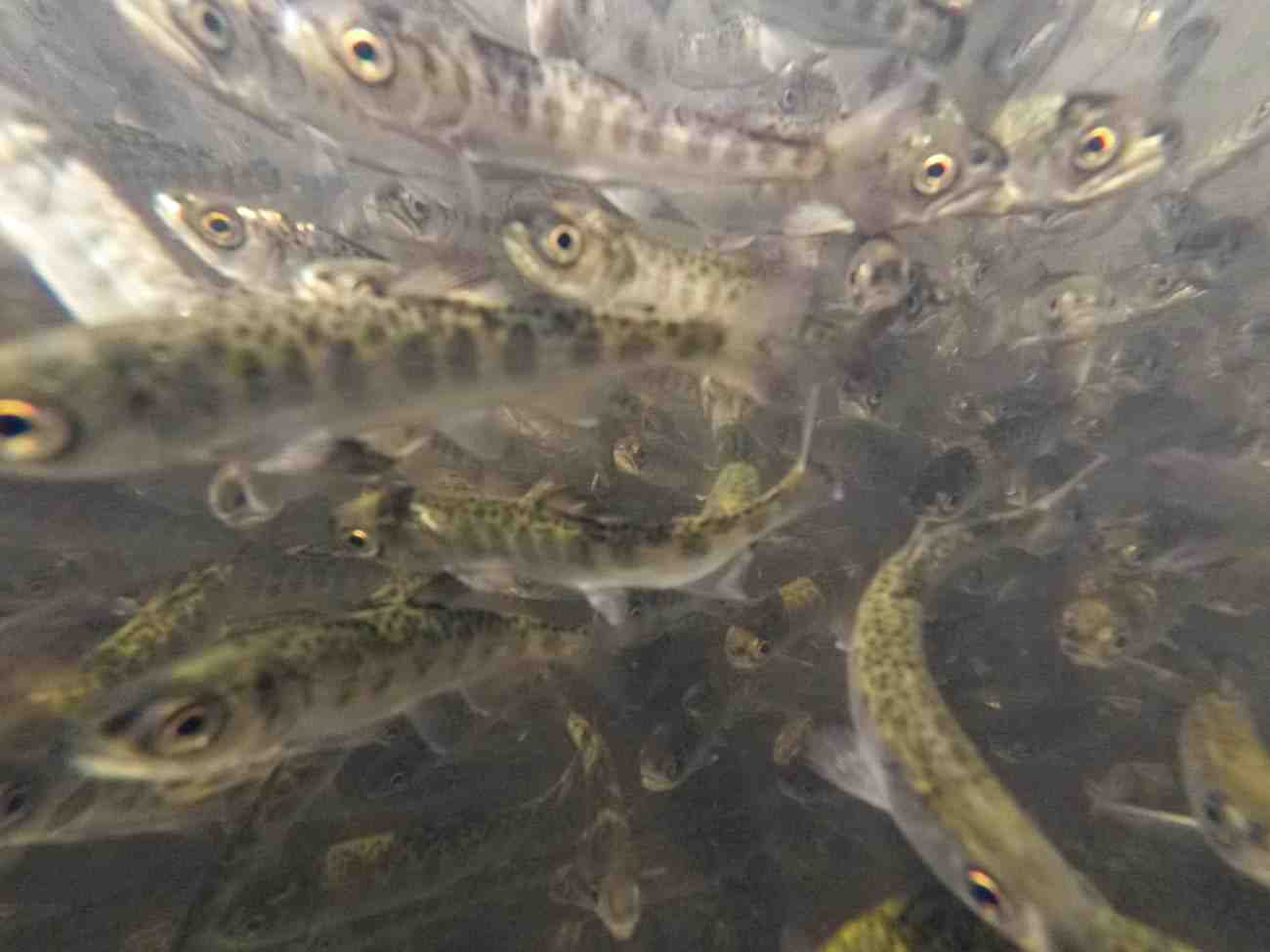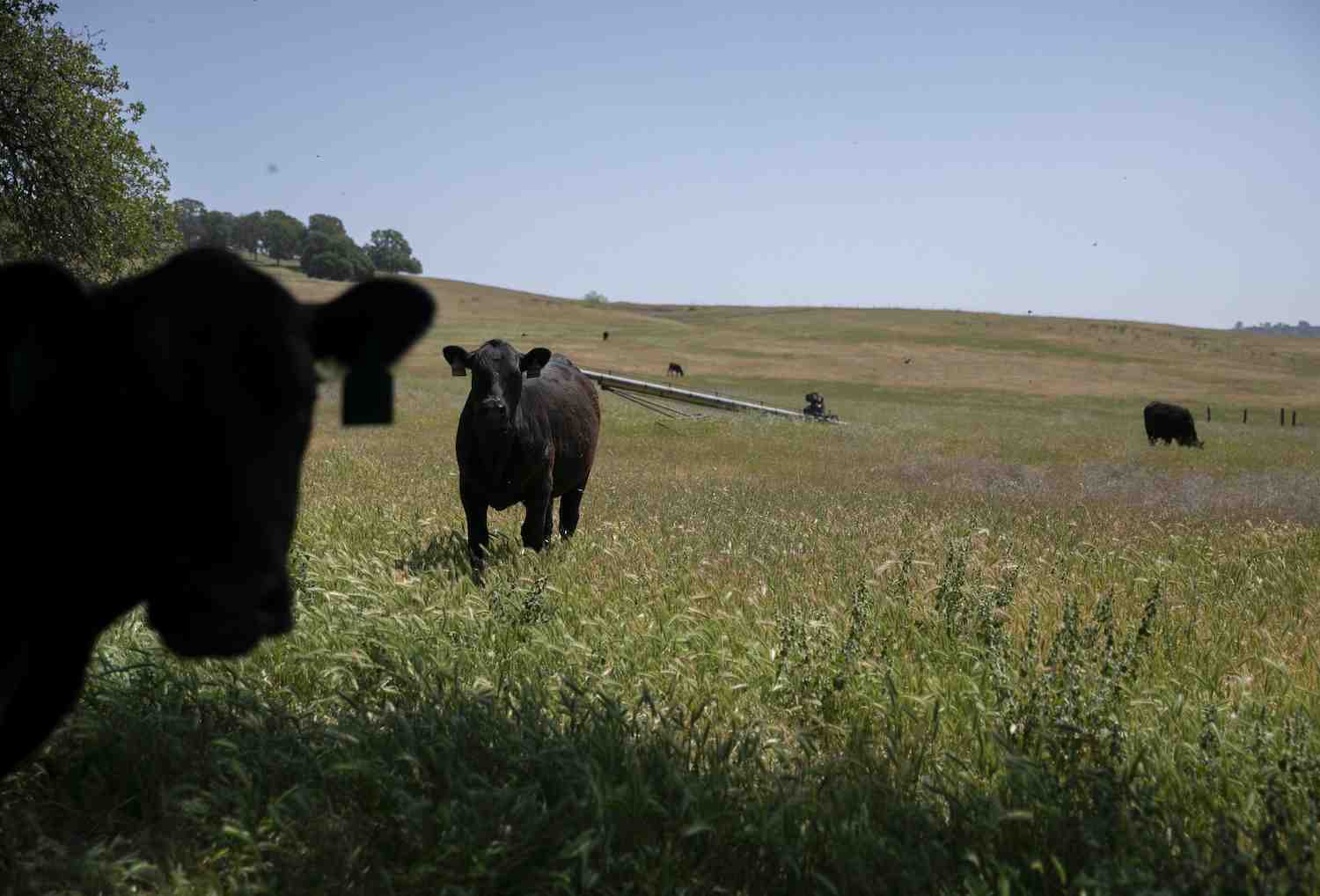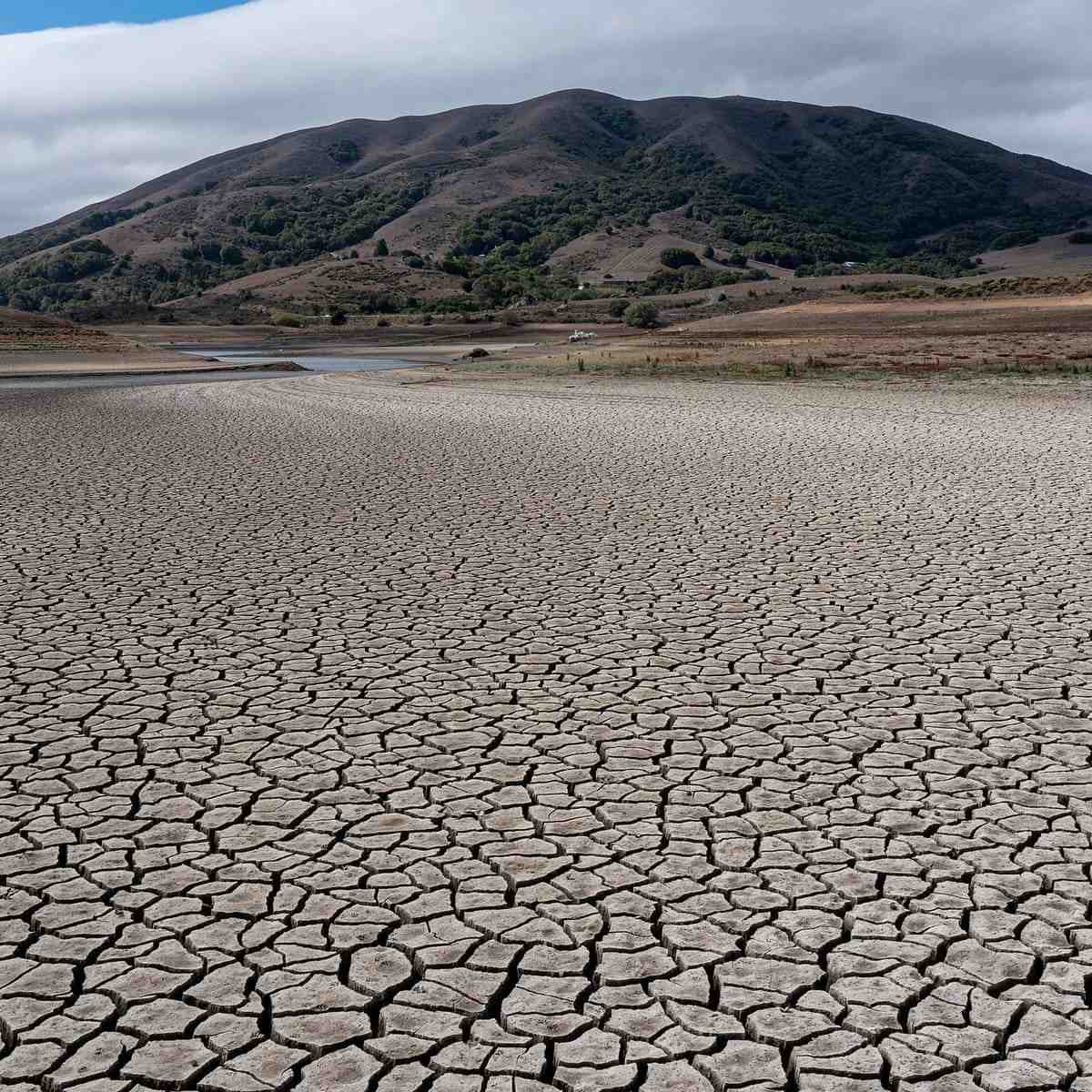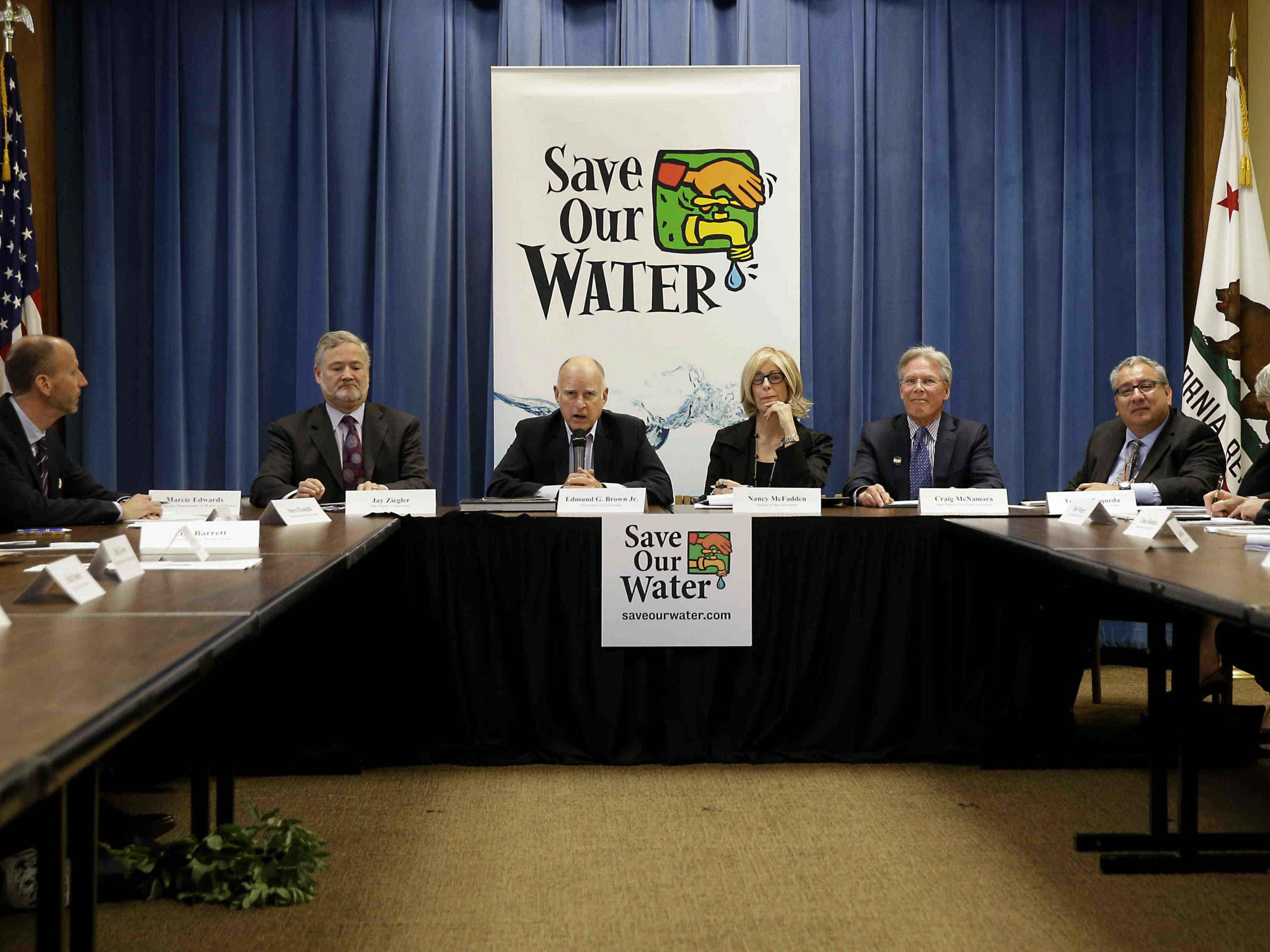Before Rick Lemos and the other directors of the Shasta River Water Association broke the law, they made a decision that under most circumstances could be considered unusual: They sent a letter to the authorities explaining exactly what they intended to do.
The California regulation they would challenge was an emergency order in response to the state’s punishing drought, which effectively prohibited ranchers and farmers in this stretch of land near the Oregon border from diverting water from the river Shasta as they had done for over a century.
“The cut has dried up the Shasta Valley to the point of endangering the health and lives of the public and residents who live here, with apparent disregard for the health of livestock and pets within this watershed” , said the association’s August letter to the state water board. . “Simply put, the lack of water is drying up livestock feed and forcing them to sell because they can no longer handle the poor conditions.”
The association, the letter said, would turn on its pumps.
Ranchers collected water for a week, risking fines of up to $500 a day. With wells drying up and ponds emptying, they saw penalties for taking water as small compensation for protecting their animals and their livelihoods. “We decided to bite the bullet. We have no other source of water,” Lemos, 61, said.
But regulators, environmental groups and indigenous nations in the region say the diversions came at a far greater cost: a risk to fish, including protected salmon species, for which the river is crucial habitat.
And they warn that the conflict between ranchers and the state could have consequences far beyond this remote corner of California, which could serve as a case study for how the state will enforce tough regulations during the crisis climatic
“What we’re seeing is the kind of response we’re going to have to climate change when it hits people’s laps and they face consequences individually that they don’t like,” said David Webb with the Friends of the Shasta River. , an environmental group that monitors the river. “We’re going to see people go their own way and I think that’s concerning.”
Ranchers’ struggle

Siskiyou County has been the site of several tense conflicts over water in recent years. At the heart of the most recent battle is the Shasta River, a tributary of the Klamath River.
The river flows through the glaciers of Mount Shasta, absorbing minerals and nutrients and creating an “ecological powerhouse” that allows fish to grow faster, stronger and more resilient than elsewhere, said Ann Willis, a senior researcher at the Davis Center. of the UC. for watershed science.
The Shasta have long played a central role in the cultures of the Yurok and Karuk peoples, California’s two largest tribes, who have subsisted on the river’s bounty for millennia.
For more than a century, the river has also been vital to agriculture, and today it serves largely as an irrigation conduit for farmers and ranchers. Access is mostly in private hands, such as the Shasta River Water Association.
Even in wet years, the river serves more users than it can handle, said Webb, with the Friends of the Shasta River. But as the American West endures its driest period in 1,200 years and wildfires have ravaged the region, the water system is under increasing pressure.
In response to what scientists have called a “worst-case scenario,” California’s governor last year declared a drought emergency in Siskiyou County and dozens of others. State officials adopted rules requiring the Shasta to have a minimum flow of 50 cubic feet per second during the summer months to aid fish survival and migration and authorized restrictions.
For months, the Shasta River Water Association, which represents more than 100 farms and ranches in the Shasta Valley, complied with the state’s orders.
But in mid-July, the association faced a full cut for the first time, a devastating blow, Lemos said.
“We followed the rules the whole time. We always have. I understand the river and what’s going on and I try to comply with what we’re supposed to comply with,” he said.
Lemos’ family has ranched in Siskiyou County since 1904. Ranching in the region has always had its challenges, but the past few years have been unlike anything he’s ever experienced, he said, “It’s been the worse than I’ve ever seen it. I can’t believe it’s as dry as it is.”
Ranchers had been coming through, Lemos said, but without water the situation quickly became impossible. People were selling their livestock and spending tens of thousands of dollars on hay and water, he said. Lemos lost a cow after it got stuck in the mud of a dry pond and had to be lifted out.
Justin Sandahl, who owns an organic dairy in the area and also serves on the water association’s board, said he spends nearly four times more on hay for his cows than he normally would. With rising costs coupled with low milk prices, the outlook for his family business was bleak, he said: “It’s not something a guy likes to brag about. It’s not good at all.”
The association argued that the new rules were too strict and that the river did not need flows at the level set by the state, joining with other irrigation districts to commission a study that supported its findings. They sent the result to regulators, but never heard back, Lemos said. The state water board said its regulations development team “considered all input from interested parties” before the board adopted the emergency regulations.
After a long meeting with the shareholders, the association decided to resume the diversions.
“We had no other way to fight. Our cows are our factory. We have nothing to sell next year when our cows haven’t been,” Lemos said.
Plunging water levels
The first day of diversions caused river flows to drop by more than half.
The Yurok and Karuk were immediately concerned by the dramatic drop in water levels, which came close to the fall salmon migration and weeks after a wildfire killed tens of thousands of fish throughout a stretch of the Klamath River.
“We were trying to recover from that event and the next thing you know, these guys are taking water out of the river illegally. These guys want to act like it’s the old west,” said Craig Tucker, a consultant for the Karuk tribe. “They took a lot of water out of the river.”
The Shasta River is among the Klamath’s most important tributaries, Tucker said, and the tribe feared that a sudden drop in water levels would strand young fish along the banks and not provide enough water for the fish to climb into the upper reaches of Shasta to spawn.
The fish are already at risk from dams, dried-up streams and landscape degradation caused by wildfires, Tucker said: “These fish are really facing death by 1,000 cuts.”
“We appreciate that it’s difficult. This is a reality of California and really the whole West is struggling to come to an agreement. … They can’t just decide the law doesn’t apply to them,” he added.
Authorities are still trying to establish the impact of the association’s moves. The California Department of Fish and Wildlife and the National Oceanic and Atmospheric Administration’s Division of Fisheries are investigating the potential harm of the diversions, including effects on water quality and quantity.
“Depleting the river’s flow so quickly and at this magnitude endangers sensitive fall coho and chinook populations,” the state water board said.
Willis, the UC Davis researcher, said any sudden removal of water from the river was problematic. The timing of the diversions, however, meant there was likely minimal risk to coho salmon and fall Chinook, although possibly some effect on steelhead. Even before that, the water temperature was already too warm for cold-water species, he notes.
“When something is already inhospitable, just making it a little bit more inhospitable is not the kind of urgent red flag that some people might have thought it was,” he said.
Lemos said he did not believe the diversions harmed the fish and that the association did not drain the river.
“This is what happens when people feel desperate”
‘This is what happens when people feel desperate’

The state water board sent the ranchers a draft cease-and-desist letter two days after the association began taking water from the river, but the ranchers continued to divert water for several more days. The case, observers say, highlights the shortcomings of the state’s enforcement strategy.
“I’m not sure how to prevent rational people from risking a $500 fine if it means keeping their livestock alive,” said Karrigan Bork, a law professor at UC Davis. “The biggest impact of this action is that the decision to willfully violate the board’s orders sets a terrible precedent, regardless of biological harm.”
Webb said others in the area were also taking water illegally and argued the diversions showed the need for more laws: “What we’re seeing is the result of decades of lack of effort to enforce the laws that we have. and the lack of enforceable laws designed in a state that has a lot of agriculture that doesn’t want to hear about it.”
Even so, he lamented the position in which the association finds itself. “The sad truth is that the irrigation district that has broken ranks is the one that has tried the hardest to find ways to reduce its water use when the fish needed it most.” he said “They would often cut back on their water consumption. I admired them for what they were trying to do.”
As drought grips the region, the challenge has emerged elsewhere in the basin. The Klamath Irrigation District in Oregon said in late August it would continue delivering water to farmers there in violation of the federal government’s orders, but later backtracked.
The Shasta River Water Association has been in talks with regulators, but doesn’t yet know what consequences it will face, Lemos said.
The state water board’s enforcement team said it had not issued a penalty but had the discretion to do so and the investigation was ongoing.
If the research shows the harm to the fish was minimal, Willis suggested regulators look at where they can offer flexibility to area ranchers.
“What we’re seeing here is what happens when people start to feel desperate. I think it’s unfair that there wasn’t an opportunity or ability to find a workable solution that would support both the farming community and conservation goals at the same time time without an action like this happening,” he said.
The water the ranchers were taking from the river provided some relief, Lemos said, at least for now. Like many others in the area, he has sold dozens of cows in recent months and plans to sell most of them. But with these cows there is also something else: a way of life. “I think it’s about to,” he said.
“If I have to sell all my cows, I’ll go somewhere else and do something else. I never thought I would feel this way, now I do,” she said. “I’ve never seen anything like this in my life.”
What happened to African Americans after the Civil War?

After the Civil War, with the protection of the Thirteenth, Fourteenth, and Fifteenth Amendments to the Constitution and the Civil Rights Act of 1866, African Americans enjoyed a period in which they were allowed to vote, actively participate in the process politician, acquire the land. from the former owners, they are looking for their…
How did African Americans rebuild their lives after the Civil War? How did African Americans try to rebuild their lives after the Civil War? They began to buy and work land on their own, and only men could vote.
What happened to slaves immediately after the Civil War?
In some places in the South, former slaves seized land from former slave owners immediately after the Civil War. But federal troops quickly restored the land to white landowners. A move among Republicans in Congress to provide land to former slaves was unsuccessful.
What happened to the slaves after the Civil War?
The Emancipation Proclamation of 1863 freed African Americans in rebellious states, and after the Civil War, the Thirteenth Amendment emancipated all slaves in the United States wherever they were.
Where did slaves go once they were freed?
The first organized immigration of freed enslaved people to Africa from the United States leaves New York Harbor on a voyage to Freetown, Sierra Leone, West Africa.
How were slaves affected after the Civil War?
The Union instituted a policy of recruiting and using them in the war effort. In August, the US Congress passed the Confiscation Act of 1861, legalizing the status of fugitive slaves. He declared that any property used by the Confederate military, including slaves, could be confiscated by Union forces.
What ended slavery after the Civil War?
Passed by Congress on January 31, 1865 and ratified on December 6, 1865, the 13th Amendment abolished slavery in the United States.
What problems did slaves face after the Civil War?
Hundreds of thousands of African Americans in the South faced new difficulties: finding ways to forge an economically independent life in the face of hostile whites, little or no education, and few other resources, such as money.
What happened to African Americans after Reconstruction?
In the post-Civil War period of Reconstruction, newly freed African Americans faced monumental challenges in establishing their own homes, cultivating their own lands, establishing community institutions and churches, and pursuing equal justice under the law in a period of racist violence.
How successful was reconstruction for African Americans?
The reconstruction was a success. power of the 14th and 15th amendments. Amendments, which helped African Americans achieve full civil rights in the 20th century. Despite the loss of ground that followed Reconstruction, African Americans achieved a measure of independence within Southern society.
What happened to African Americans after the end of Reconstruction?
Among the laws passed by Congress, the most notable were three amendments to the US Constitution: the Thirteenth Amendment (1865) ended slavery, the Fourteenth Amendment (1868) guaranteed African Americans the rights of American citizenship and the Fifteenth Amendment (1870) guaranteed black men. constitutional right to…
What were 5 consequences of the Civil War?

It had many major repercussions that had a deep and lasting impact on the nation. Among these was the Emancipation Proclamation; the assassination of President Lincoln; the Reconstruction of South America; and Jim Crow laws.
What are the causes and consequences of the Civil War? What were the 4 main causes of the Civil War? The main cause of the Civil War was the humanitarian and economic problem of slavery. However, the four most important causal factors were slavery, states and federal rights, the economy, and the election of Abraham Lincoln in 1860.
What were some effects after the Civil War?
The first three of these postwar amendments achieved the most radical and rapid social and political change in American history: the abolition of slavery (13th) and the granting of equal citizenship (14th) and rights of vote (15th) to the former slaves, all within a period of five years.
What were 4 effects of the Civil War?
Among these was the Emancipation Proclamation; the assassination of President Lincoln; the Reconstruction of South America; and Jim Crow laws.
What were the after effects of the Civil War?
The Civil War confirmed the single political entity of the United States, led to the freedom of more than four million enslaved Americans, established a more powerful and centralized federal government, and laid the groundwork for the emergence of America as a world power in the 20th century.
What was the biggest consequence of the civil war?
The biggest result was the end of slavery. The 13th Amendment called for the abolition of slavery, and was in support of President Lincoln’s Emancipation Proclamation. In addition, the 14th and 15th Amendments to the Constitution were also approved by Congress and ratified by the states, becoming law.
What was the main consequence of the civil war?
The Civil War confirmed the single political entity of the United States, led to the freedom of more than four million enslaved Americans, established a more powerful and centralized federal government, and laid the groundwork for the emergence of America as a world power in the 20th century.
What had the greatest impact on the outcome of the Civil War?
Which of the following had the most impact on the outcome of the Civil War? Economic differences between the Union and the Confederation.
What are 3 consequences of the civil war?
The Civil War confirmed the single political entity of the United States, led to the freedom of more than four million enslaved Americans, established a more powerful and centralized federal government, and laid the groundwork for the emergence of America as a world power in the 20th century.
What are the 3 main causes of the Civil War?
The American Civil War began in 1861, after decades of simmering tensions between northern and southern states over slavery, states’ rights, and westward expansion.
What was the biggest consequence of the civil war?
The biggest result was the end of slavery. The 13th Amendment called for the abolition of slavery, and was in support of President Lincoln’s Emancipation Proclamation. In addition, the 14th and 15th Amendments to the Constitution were also approved by Congress and ratified by the states, becoming law.
What had the most impact on the outcome of the Civil War? Which of the following had the most impact on the outcome of the Civil War? Economic differences between the Union and the Confederation.
What was the main consequence of the civil war?
The Civil War confirmed the single political entity of the United States, led to the freedom of more than four million enslaved Americans, established a more powerful and centralized federal government, and laid the groundwork for the emergence of America as a world power in the 20th century.
What were the major consequences of the civil war quizlet?
More than 600,000 Americans died in the Civil War, more than in all other American wars combined. The south was destroyed. The power of the federal government was never seriously questioned again. Slavery was abolished.
What were four consequences of the civil war?
The Civil War confirmed the single political entity of the United States, led to the freedom of more than four million enslaved Americans, established a more powerful and centralized federal government, and laid the groundwork for the emergence of America as a world power in the 20th century.
What were the 4 main causes of the Civil War? For nearly a century, the people and politicians of the northern and southern states had clashed over the issues that ultimately led to the war: economic interests, cultural values, the power of the federal government to control the states, and, most important, slavery. in American society.

